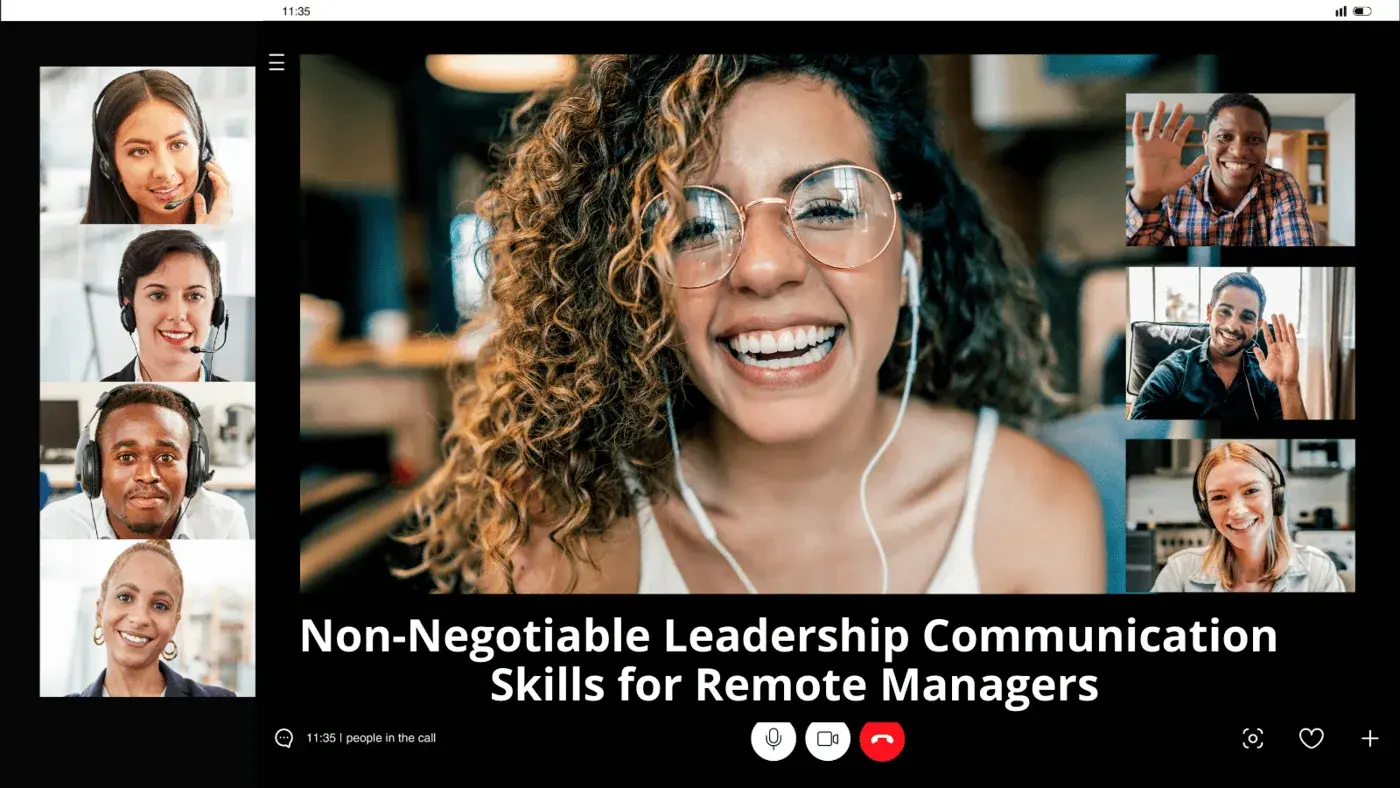Leaders Who Embrace Feedback Training Have Happier, Healthier & More Productive Teams
If your feedback has ever failed or fallen flat, you’re in good company. Feedback training for leaders is one of the most overlooked aspects of...
6 min read
Radical Candor May 9, 2024 6:53:23 PM

By Indiana Lee, a freelance journalist specializing in business operations, leadership, communication, and marketing.
No business with multiple employees succeeds in silence. Communication in the workplace is vital to the success of everything from basic day-to-day operations to empowering people to innovate.
While people may have a range of interactive abilities, their communication skills might not always be honed to the point of being effective for your company or their careers.
This is why workplace communication training is a powerful tool. By giving your workforce—from entry-level employees to executives—the knowledge to improve their communication skills in relevant areas, you’re setting a foundation for improving team performance and achieving success.
However, even though you know how impactful communication training in the workplace can be, it’s not always easy to know exactly what aspects of communication can be most impactful. So, let’s examine a few key areas of workplace communication training.

Need help with workplace communications training? Let's talk!
This improves retention and reduces quiet quitting. By learning to have Career Conversations, asking questions, and clarifying thoughts and ideas before communicating them to others, you set yourself and your company up for success.
What type of workplace communication training influences organizational success? Understanding the most important types of communication at work is a good place to start.
For upward communication to work, leaders must ask employees for feedback and employees must feel safe to give feedback to their boss.
Encouraging employees to communicate up the chain of command gives managers and executives visibility into day-to-day activities, while employees feel safe to speak truth to power without fear of reprisal.
Effective upward workplace communication training includes teaching managers how to establish psychological safety, regularly solicit feedback from their direct reports, and provide training via feedback workshops like the ones offered by Radical Candor.
Learn how to practice upward feedback >>
Leaders knowing how to communicate with their direct reports effectively ensures that relevant information is passed on to those who need it.
The most important part of workplace communication training is providing managers with opportunities to improve their leadership communication skills regularly as communication is an ever-evolving process and what works for one person won’t work for every person.
Training should encourage managers to get to know the people who report directly to them well enough to know what they do, what tools they need to perform well at their jobs, and how they like to receive information.
For managers who haven’t received workplace communication training, it’s easy to default to an absentee management style. Some managers assume if they hire the right people they can let them loose and ignore them.
Kim Scott, author and co-founder of Radical Candor says adopting a "choose and ignore" mindset is a big mistake.
“If you don’t take the time to get to know the people who get the best results, you can’t understand how they want and need to be growing in their jobs at that particular moment in their lives. You’ll assign the wrong tasks to the wrong people. You’ll promote the wrong people. Also, if you ignore your top performers, you won’t give them the guidance they need.”
Get our free guide for communicating with direct reports >>
Also known as horizontal or lateral communication, this type of communication is vital for peer-to-peer and cross-functional team collaborations.
Despite peer-to-peer and cross-functional communication being so vital, many people are apprehensive about communicating with peers and attempt to funnel everything through their manager.
Managers, when someone tells you about something great a colleague did, urge them to also share that feedback directly with the colleague who did the great work.
This will develop stronger relationships between peers, allow for more praise to be shared (again, you don’t want to be a feedback bottleneck), and provide more perspectives on what’s going well and why.
When there are issues, insist that people communicate them directly. It’s kinder for them to tell their colleague about the issue that needs to be fixed than to report that issue to the boss.
This type of workplace communication training should focus on encouraging peer feedback, helping people build workplace relationships, and teaching people the importance of clean escalation versus talking about someone behind their back.
Watch Kim Scott & Gretchen Rubin explain how to communicate at work >>

Your employees’ interactions with clients, supply chain partners, and other external parties are integral to the strength of your organization. Not to mention that these interactions influence your reputation.
This type of workplace communication training should focus on the company’s brand voice, values, communication expectations, and how to interact with external partners in a way that accurately represents the organization and its goals.
It’s worth considering that these types of communication will be used in different ways depending on the structure of your organization.
When designing your workplace communication training programs, start by examining how your employees communicate and what hurdles currently exist. You’re then better able to tailor your training to focus on which methods are most in need of upskilling or adjustment.
You may also want to offer folks a workplace communication training course for employees so everyone has a grasp on the organization’s communication culture. This kind of workplace communication skills training can be offered asynchronously by using platforms like MasterClass or LinkedIn Learning.
Now that you know what kinds of workplace communication training are most important to your organization, let’s talk about how establishing a culture of Radical Candor facilitates effective communication at work.
Explore workplace communication training courses and workshops >>
he most effective way to implement a successful feedback culture is by embracing the principles of Radical Candor to teach everyone a shared language for communicating that’s kind, clear, specific, and sincere.
Absent this kind of workplace communication training, people tend to default to Ruinous Empathy, being kind but not clear, Obnoxious Aggression, being clear but not kind, and Manipulative Insincerity, being neither kind nor clear and talking about others behind their backs.
Radical Candor offers virtual, in-person, and digital courses for companies of every size to help you level up your workplace communication training.
@thegardeningtheologian #greenscreen let’s talk about the new model for workplace wellness: Protection from harm. Connection and community. Work-life harmony. Mattering at work. Opportunities for growth. I love this model because it highlights the ways that we can create work environments that are connection-centered vs. productivity centered. #fyp #work #connection #inclusive #equity #healthywork ♬ Just a Cloud Away - Pharrell Williams
Workplace mental health and employee welfare is both an ethical duty for companies and a business imperative. Reliable workplace communication impacts employee well-being in a range of ways.
It enables social wellness by helping employees build stronger bonds with colleagues, reduces stress, and improves employee engagement.
Open communication also fosters a culture of feedback and transparency, in which people are comfortable sharing thoughts and feelings, thereby strengthening mutual trust.
Another element of workplace communication training is ensuring everyone understands that a diverse workforce is key to innovation and a richer experience for all stakeholders. This is why it’s important to hire people who are “culture adds” rather than “culture fits.”
To get the most out of any workplace communication training, it’s important not only to be aware of cultural differences in the workplace but also to commit to creating an inclusive workshop experience where everyone feels safe to participate.
Kim Scott’s book Radical Respect: How to Work Together Better teaches folks how to optimize for collaboration instead of coercion and to value individuality instead of conformity.
Good workplace communication training supports everything from organizational success to employee well-being. Remember, though, that one-off training courses are unlikely to be effective on their own.
It’s important to integrate what you learn into your company’s overall culture, including all areas of employee training and development. You’ll find your efforts have a more holistic and lasting impact when you walk the talk versus thinking of workplace communication training as one-and-done.
If you're interested in learning about AI-driven workplace communication training practice partner from Radical Candor, contact us today!
Start your workplace communication training with our free guides >>
***
Indiana Lee is a freelance journalist specializing in business operations, leadership, and marketing. Her writing aims to provide insights that promote personal and organizational growth. Connect with her on LinkedIn
————————————————————————————————————————————————————————————–
Do you want to fix communication issues in the workplace? Then you need The Feedback Loop (think Groundhog Day meets The Office), a 5-episode workplace comedy series starring David Alan Grier that brings to life Radical Candor’s simple framework for navigating candid conversations.
We’re offering Radical Candor readers 10% off the self-paced e-course. Follow this link and enter the promo code FEEDBACK at checkout.

If your feedback has ever failed or fallen flat, you’re in good company. Feedback training for leaders is one of the most overlooked aspects of...

By Gaurav Sharma, founder and CEO of Attrock, a results-driven digital marketing company that he grew an agency from 5-figure to 7-figure revenue in...

By Gaurav Sharma, founder and CEO of Attrock, a results-driven digital marketing company he grew an agency from 5-figure to 7-figure revenue in just...